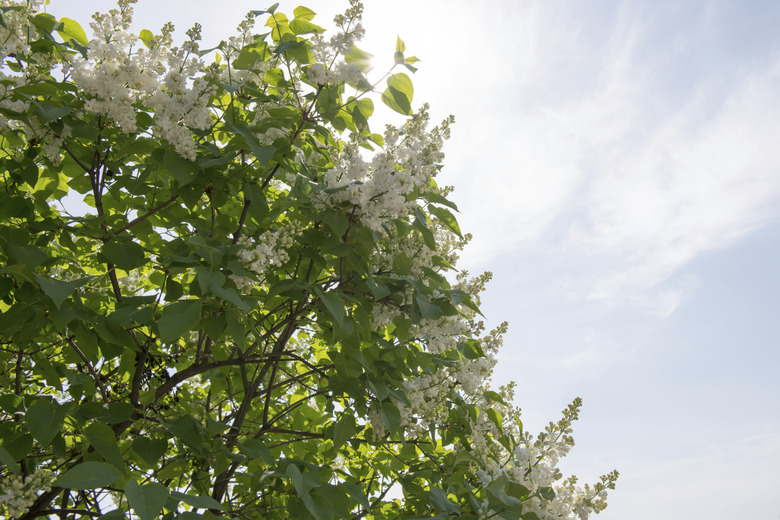Lilac 'Ivory Silk' Tree Facts
The Japanese tree lilac "Ivory Silk" (Syringa reticulata "Ivory Silk") is related to the fragrant, old-fashioned flowering shrubs of the same genus, but it stands apart on several counts. Hardy in U.S. Department of Agriculture plant hardiness zones 3 through 7, "Ivory Silk" lilac grows into a strong, elegant tree with a distinctive scent. This beautiful ornamental tree stays relatively small and fits well in many landscape situations.
Form and Size
With a pleasing form and compact size, "Ivory Silk" Japanese lilac reaches 20 to 30 feet in height at maturity and spreads 15 to 18 feet in width. Young trees show an oval to pyramidal form. As the tree grows and matures, it fills in to take on a fuller, more rounded shape. A popular boulevard tree, "Ivory Silk" works well as a specimen tree, buffer or screen.
Flowering Habit
Blooming in early summer, "Ivory Silk" boasts showy blossoms that are its principal ornamental feature. Its tiny springtime blooms, quite different than its shrubby relatives, cluster in creamy white panicles. While fragrant, they don't share the scent often associated with the shrubs. The sweet smell draws many pollinators to the tree's blooms. Normally a profuse bloomer, Japanese tree lilacs may fluctuate in their blooms from year to year.
Additional Features
Aside from the ornamental benefits of the tree's flowers, "Ivory Silk" has many features. Its showy, reddish bark stays attractive year-round, and the tree tolerates conditions that other plants find inhospitable. Poor soil, mild drought conditions, salt spray and urban pollution don't seem to bother "Ivory Silk."
Warm-Climate Concerns
If planted in shade or warm climates, "Ivory Silk" flowers less heavily and may develop powdery mildew or other fungal diseases on its leaves. Lilac borers can also be a problem. This is especially problematic in hot, humid climates at the edge of its hardiness zone.
Other Considerations
Give "Ivory Silk" plenty of room to grow and good air circulation. It rarely needs pruning to maintain its shape and health, and to keep it free from overhead power lines. When located in a sunny area, planted correctly and properly established, "Ivory Silk" has minimal disease or pest problems.
